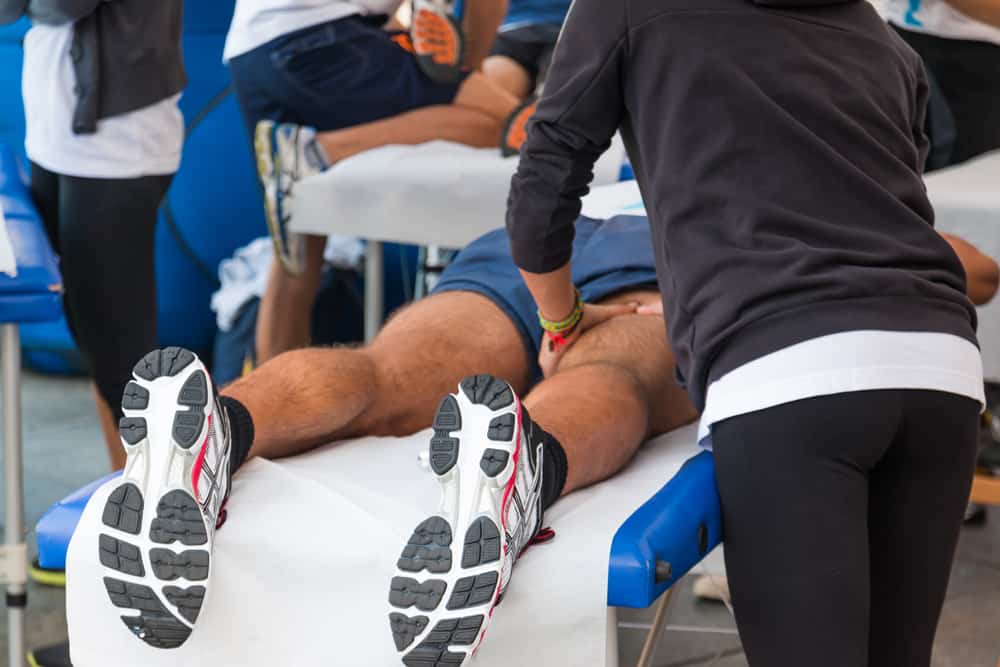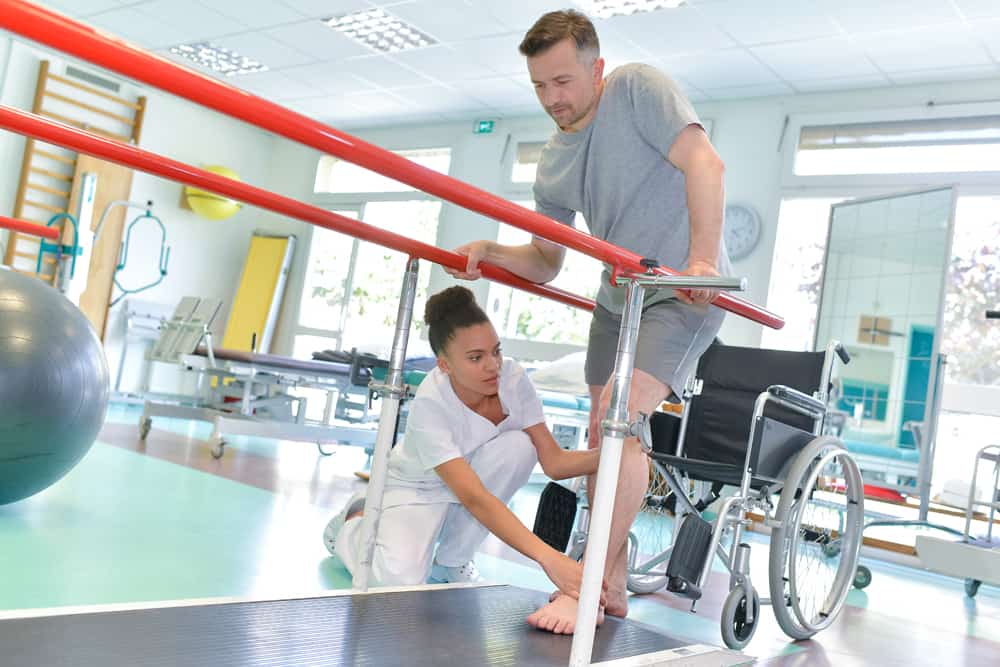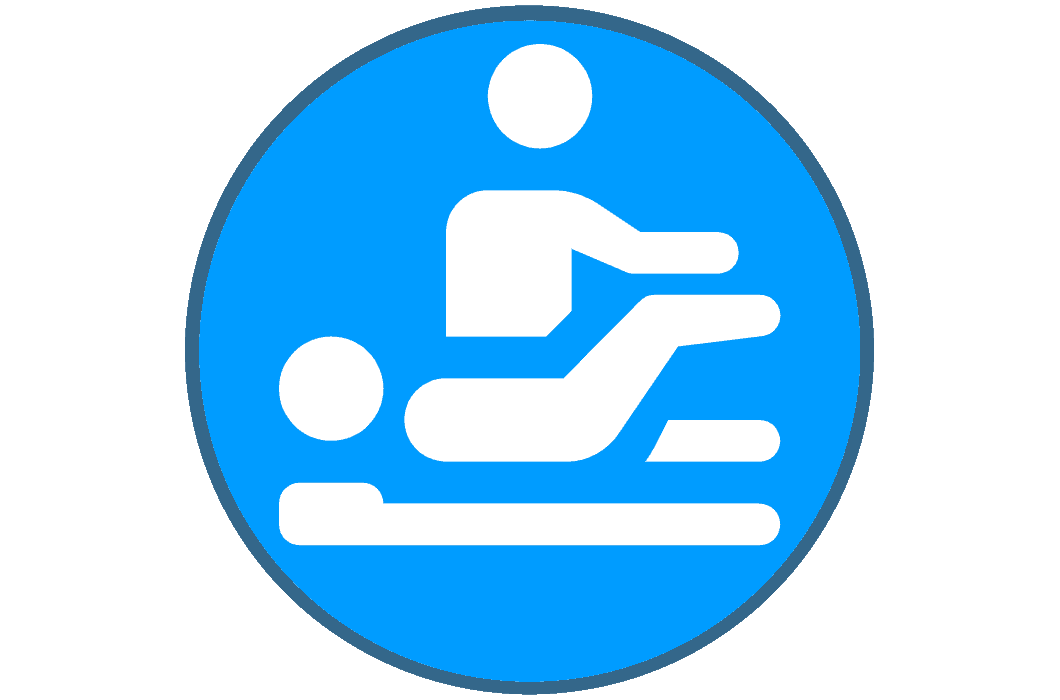What Does a Physical Therapist Assistant Do?
Physical Therapist Assistants, also known as PTAs, work under close supervision and direction of physical therapists, along with other physical therapy aides and PTAs.
Together, they help restore patients’ ability to move and perform their full range of motion.
In particular, they work with injured clients, to strengthen their muscle groups back to normal strength, endurance, and mobility.
PTAs spend most of their time consulting one-on-one with patients, examining each one individually, determining the stretches and exercises to get them back to shape and actively checking on their progress.
Many people ask what does a physical therapist assistant do?
The short answer: change lives.
But we know you want more details 🙂
So, today we are going to share some details behind a day in the life of a PTA so you can learn what a physical therapy assistant does.
Who Are the Patients / Clients?
Physical therapy services cater to anyone with a movement impairment or function limitation, who’s unable to perform activities that they were once capable of.
PTAs treat individuals of all ages, whether they are newborns or over 100 years old. Although people seek physical therapy for different reasons, most patients are usually individuals who have experienced an injury, disease, disorder or any other condition that has affected their health status and normal physical functioning.
PTs and PTAs treat patients suffering from neurological, orthopedic and medical-surgical disorders. So, just about any demographic can fall into these categories.
One group of patients that many Physical Therapy Professionals specialize in treating are athletes. PT helps athletes prevent injuries as well as recover from them.

PTA Work Settings
There are various work settings a physical therapist assistant can care for people.
For instance, in Central Florida, PTAs are mostly found in outpatient offices, nursing homes, hospitals, private practices, schools, home health agencies and sports and fitness facilities.
More often than not, PTAs can work independently, without the presence of a physical therapist.
Day Time Working Hours
Physical therapy is primarily a day-time job, with a typical PTA work-day starting from 8 a.m. to 5 p.m.
However, some physical therapy practices choose to divide their service hours into shifts, where patients can either be treated during the early morning hours or in the early evening.
In such cases, a PTA’s working hours may be from 6 a.m. to 2 p.m. or from 10 a.m. to 6 p.m. Other service providers such as hospitals and nursing homes, provide physical therapy services on the weekends.
A PTA working in such a setting may need to work on the weekends and holidays on a rotational basis.
A Typical Working Day
A physical therapist assistant usually starts the day off by reviewing their day’s work schedule.
Patients/ clients may be assigned to the PTA for further treatment and observation, once a physical therapist has personally evaluated them and determined the treatment they need.
It is then the responsibility of the PTA to implement the interventions provided, make modifications where necessary and report back to the PT on a regular basis.
In some settings, the PT is not physically available when the PTA is administering treatment to patients. Due to this fact, PTAs need to be accountable, and capable of working independently.
Common Interventions a PTA Conducts
There is a wide range of treatments and procedures employed in the physical therapy world.
Most of these require a trained physical therapist assistant who can carefully utilize them, to nurse a patient back to a healthier and active lifestyle, within the timelines set by the physical therapist.
Some of the basic activities PTAs do on a normal day include walking, standing and on occasion, heavy lifting.
A PTA may help with the following interventions:
- Exercise Therapy: PTAs create and execute therapy programs leveraging exercises to build strength, coordination, mobility, endurance, and balance.
- Transfer Training: A skill taught to patients who need help transferring from a wheelchair to the bed for example.
- Gait Training: Reteaching patients to walk after they lose their ability to do so.
- Modalities: A PTA may use physical agents such as cold/hot temperatures and electricity applied to muscles to relieve pain and increase mobility.
- Wound Care: If a patient has open burn wounds or other open wounds then a PTA may administer whirlpool treatments and apply dressings.
- Massage Therapy: PTAs are trained to use a therapeutic massage techniques to relieve pain, improve circulation, and increase mobility.

Observation & Recording
While a PTA’s job revolves around rehabilitating a patient’s full mobility, their responsibilities do not involve much physical work.
According to the US Department of Labor (DOL), a huge part of a PTA’s day is spent observing patients.
This involves taking notes to record patients’ progress, for the purpose of assisting the physical therapist in formulating more effective treatments for a patient’s speedy recovery.
Educating Patients and Their Families
The responsibilities of PTAs go far beyond the healing process. Once a patient is done with physical therapy, PTAs often recommend the right stretches and exercises a patient needs to perform to continually maintain and promote optimal physical function and wellness.
A PTA is required to make sure that the patient and their family understand what the treatment entails, through easily understandable explanations and answering questions as they arise.
Therapeutic Massage
One of the techniques used by PTA in an effort to help patients regain their physical abilities is therapeutic massage.
Therapeutic massage acts as an effective pain reliever, working to reduce muscle tension while boosting blood flow, which helps in the overall healing process.
Therapeutic Ultrasound
The device used in the imaging procedures for pregnant women offers a variety of uses in the healthcare field.
Physical therapy providers have embraced the therapeutic benefits of the ultrasound, so much so that the skills involved are widely sought-after by employers.
The sound waves released by the machine are used to loosen tissues, increase blood flow and minimize the swelling of injuries.
Prosthetic Devices
Physical therapy doesn’t just apply to treat sports injuries or movement disorders, amputees also benefit from physical therapy.
Physical therapist assistants play an essential role in rehabilitating amputees. They help them transition back into their daily lives using prosthetic devices.
PTAs are required to carefully create training plans that will ensure that the patients learn how to make the most of the prosthetic devices to make their functioning as natural as possible.
Communication
PTAs normal working day is based solely on communication, whether it’s being briefed by the physical therapist, explaining to a patient how a treatment plan works, actively getting feedback from a patient or reporting back to the PT on the progress and observations.
A PTA needs to have proper listening skills and the ability to explain complex medical terminology in a language that a patient can understand.
Besides expressing technical details, PTAs serve as an encouragement to patients, cheering them on with every progress they make.
Positive feedback is vital for any struggling patient, and any sign of genuine excitement can make a world of difference.
Treatment planning
While it’s the responsibility of a physical therapist to create a treatment plan, PTAs are expected to be actively involved in suggesting modifications and better alternatives for rehabilitation, based on a patient’s progress.
Additionally, the physical therapy industry is on high alert for PTAs with treatment planning experience.
Home-based rehabilitation
In-home health care ability is another desirable skill in the PTA jobs department.
Many physical therapy providers offer those who are bed-ridden or physically unable to come to the clinic, in-house rehabilitation alternatives.
This is particularly common for elderly patients recovering from a fall or those who have undergone hip or knee surgery and can’t drive.
For this scenario, a PTA should be flexible and able to adapt to a less-than-ideal work setting, while still providing the highest quality of care and comfort.
Decision making
A PTA needs to take a hands-on approach when it comes to implementing or changing a patient’s treatment.
Careful attention throughout the rehabilitation process is critical, especially to spot a problem, or notice if an exercise is less effective or putting too much pressure on an injury.
It’s no wonder that the Department of Labor includes decision making and judgment skills as essential for personal therapy assistant jobs.
What Does a Physical Therapist Assistant Make?
PTAs earn very competitive healthcare salaries across the country in a number of industries.
We maintain an updated physical therapy assistant salary guide you can use to compare PTA salary data across regions and industries. On average, the annual PTA salary is $57,620.
Conclusion
Well folks, there you have it.
No need to keep wondering what does a physical therapist assistant do.
Now you know, they help change lives! They help restore patients’ physical abilities to get back to their everyday lives.
A career as a PTA is very rewarding and comes with high job satisfaction.
We have a lot of great educational and career resources for folks interested in a PTA career.
A couple of places you may want to start your career planning are by researching PTA programs and also looking at your state’s license requirements to become a PTA.

